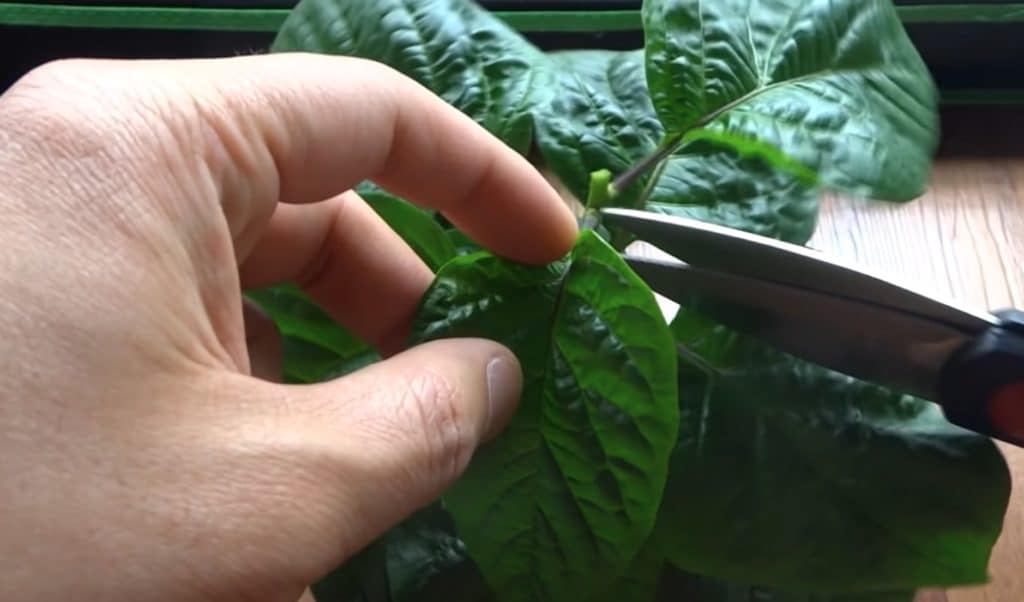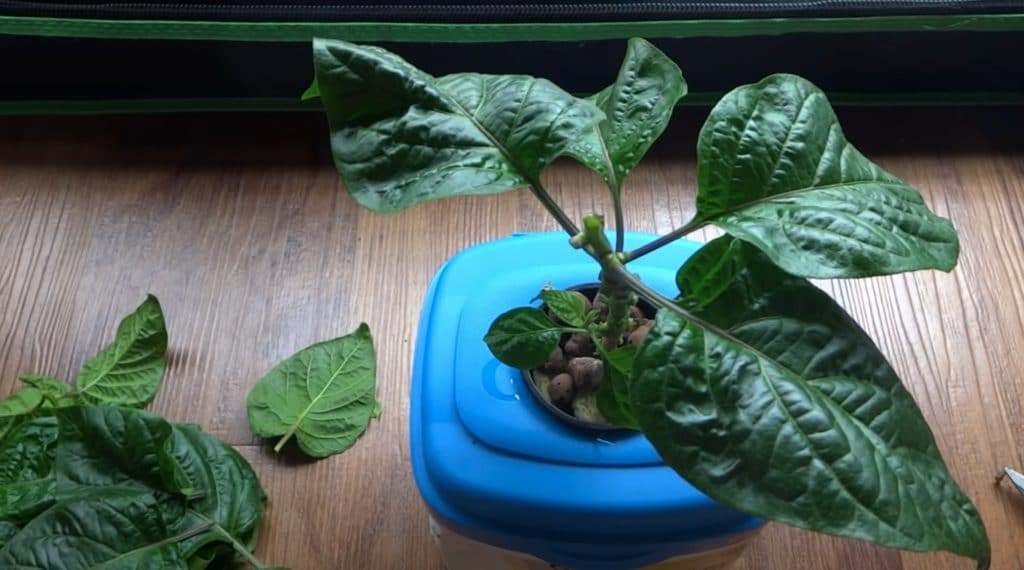Growing pepper plants is fun, educational for your children, and will make your yard more colorful. Pepper plants are one of the most common garden vegetables and are often one of the first vegetables people decide to grow.
Pepper plants can provide you and your family with an extended harvest that lasts throughout the growing season. The fruits vary in size and taste. Some peppers are sweet, while others are spicy. Many gardeners grow a few different varieties to get the right flavor.
Some pruning techniques help gardeners increase their yields. Let’s look at how to top pepper plants to improve your plants’ health and produce more fruit.
What is Topping?

Many gardeners use a technique known as ‘topping’ on their pepper plants. This process involves cutting the pepper plant’s main stem so that it doesn’t get too tall. You can cut the top of the stem off above two branches.
By topping your pepper plants, you are stopping upward growth. This means that the plant will put its energy into growing the branches and producing fruit rather than trying to get taller.
The top of a pepper plant contains growth hormones called auxin and gibberellins. These chemicals send the plant signals, which encourages it to grow taller. If you cut the top off your pepper plant, these hormones will be moved into the branches below the cut, and the plant will encourage branch growth.
Signals will be sent to the pepper plant to stimulate growth, causing the pepper plant to branch out. The plant will no longer get any taller.
Why are Pepper Plants Topped?
Pepper plants are naturally tall plants that can quickly get leggy. Topping a pepper plant is beneficial if you’re growing the plant in a small yard or a container. Having a bushier plant will mean that it’s more supported as the plant will get bushier.
Gardeners commonly top their pepper plants with the aim that they will be able to produce larger fruits that are of higher quality.
Does Topping a Pepper Plant Help Increase Yield?
There are many different varieties of pepper plants, and some do very well when ‘topped’ while others respond less. Most gardeners recommend topping small chili plants as this will encourage them to bush and help increase fruit production. As discussed above, topping discourages the plants from getting taller. This causes branch nodes to grow closer together. These nodes will eventually grow into branches that will produce flowers and then fruit. Having more nodes in a smaller area is beneficial.
While evidence suggests that small chili plants benefit from topping, and this will increase yield, other peppers may not be as successful. Many gardeners disagree that all species of pepper plants should be topped. For many species, there is no evidence to suggest that topped plants can produce more fruit than naturally grown peppers.
Topping some species such as bell peppers will actually create a decrease in overall yield. In most cases, topped pepper plants are more robust as they are shorter and more stable. This allows them to produce higher quality fruits, although the method may not increase yield.
Rather than topping a pepper plant, many gardeners recommend using stakes to keep tall plants stable. You can also grow pepper plants in a cage. If either of these methods works well for you, there’s no reason to top your pepper plants. Rather than topping your pepper plants, you may like to prune them to allow sunlight to get to the fruits to ripen them. It’s also a good idea to trim off some of the suckers to make your plants healthier and more productive.
How to Top Pepper Plants
It’s best to top your pepper plants when they are young seedlings that are about 12 inches tall. You can cut off the main stem just slightly above a set of healthy branches. This will encourage growth on the branches below the cut.
You may notice that your plant looks slightly worse for wear after it’s been topped, but it will recover within a few days. The growth hormones will then be rerouted further down the plant, and you’ll notice new branch growth, and your plant will likely become bushier over time.
If your new branches have started to get too long, you can also prune them slightly. Cutting branches will encourage the plant to form a “Y” shape. If you keep doing this, the plant will become bushier. You can top the plant as many times as you need to throughout the growing season. Ensure that you make careful cuts and pay attention to how the plants are growing and branching after you make a cut.
If you end up with any areas that look empty, you can encourage growth by cutting above branches growing towards the gap. This will encourage the plant to fill the spaces. Cut off branches if they are crossing each other as this will open up the plant and allow it to get more sunlight on its leaves.
Grow New Plants from the Cuttings
If you’ve cut the top off your plant or removed some branches or suckers, you can use these to grow a new pepper plant. Be careful with cuttings as you remove them so that you don’t damage them. The cuttings can be placed in a cup of water to which you can add rooting hormone. After a few days, the cuttings will begin to grow roots.
Once you notice a few roots have grown, you can put the cutting into a plant pot. It will take a few more days for the roots to establish themselves correctly, and then you’ll have a new healthy plant that you can care for as you would any other pepper plant.
Conclusion
As you can see, there are many benefits of topping a pepper plant, but this practice is not necessary for all pepper varieties. If you’re growing a chili pepper, cutting off the top will encourage the plant to become bushier and produce higher yields. Some peppers will produce less fruit if topped, but the fruit will be larger and of higher quality.
When you plant a garden, pepper plants are a great choice of vegetables to grow. Topping them will help improve the results. If you are seeing holes in your pepper plants, it may have a few resident caterpillars.
